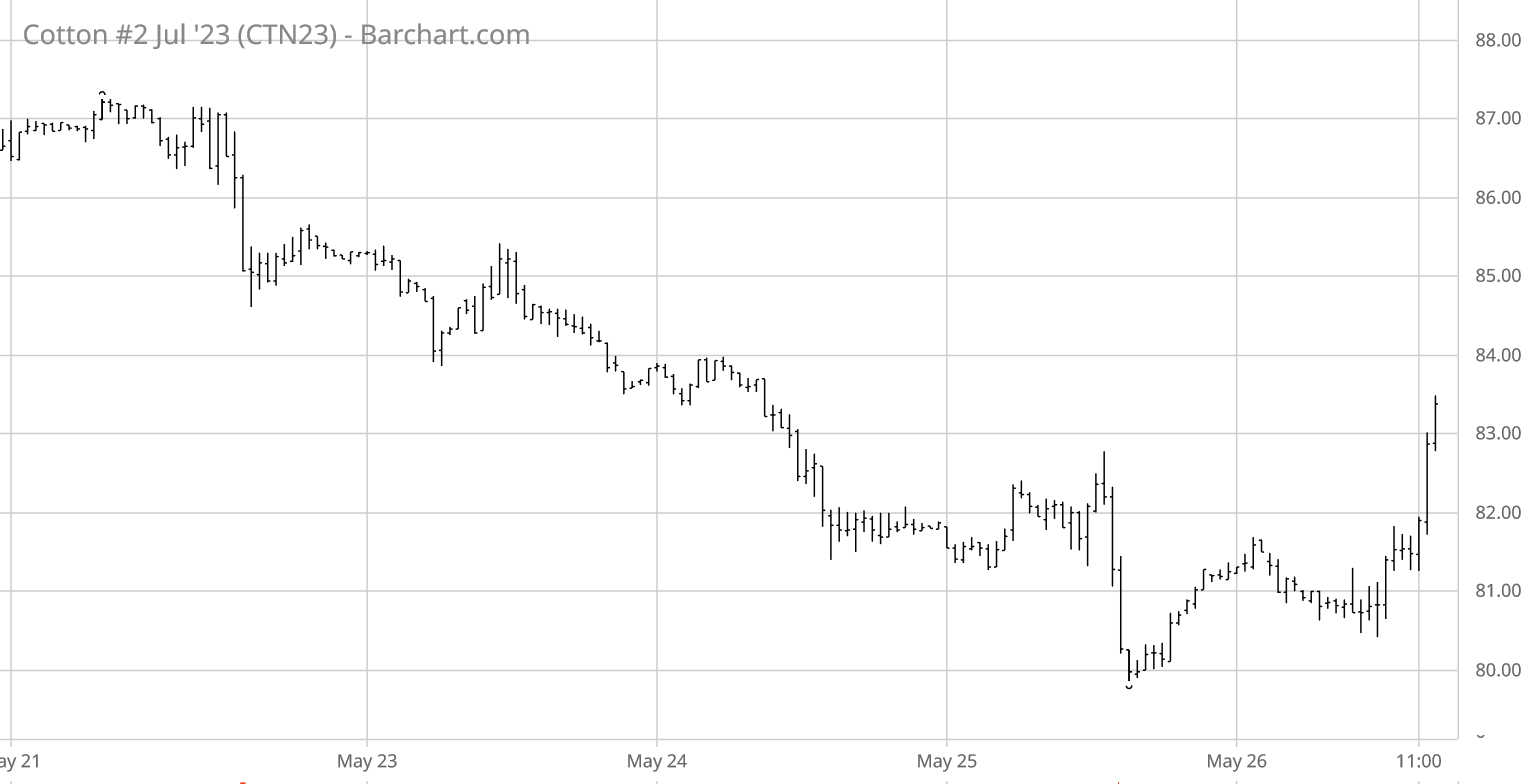For the week ending Friday, May 26, ICE cotton futures declined from Monday through Thursday, erasing the previous week’s gains (see chart above courtesy of Barchart.com). The nearby Jul’23 contract declined seven cents before finding support just below 80 cents and then recovered over three cents on Friday to settle at 83.35 cents per pound. The new crop Dec’23 settled the week at 80.64 cents per pound . The week saw an up-trend in CBOT corn, while CBOT soybeans and KC wheat futures both gyrated in a volatile sideways pattern. Chinese cotton prices trended lower across the week, as did the A-Index of world cotton prices. The U.S. dollar index trended higher across the week.
Most commodity, equity, and bond markets appeared to wax and wane with changing expectations of a solution to D.C.’s debt ceiling negotiation.

Cotton-specific influences this week included yet more precipitation over parts of Texas. U.S. export sales were weaker for a second week in a row, while actual export shipments remained strong. USDA’s weekly summary of the U.S. regional markets continued to reflect mixed spot physical trading activity and demand across the various U.S. regions.
ICE cotton futures open interest increased across the week, while futures settlements declined. This has the appearance of new short positioning, but appearances were apparently deceiving, at least through Tuesday. That is because the regular weekly snapshot of speculative positioning (through May 23) indicated long positioning: 6,860 new hedge fund longs and 11,936 fewer (covered) hedge fund shorts, week over week. In addition, the index fund net long position grew by 2,652.
For more details and data on Old Crop and New Crop fundamentals, plus other near term influences, follow these links (or the drop-down menus above) to those sub-pages.
Πηγή: TAMU

